What is osteomyelitis?
Osteomyelitis is a bone infection that requires treatment as soon as possible. When bacteria or fungi infect a bone, they can cause inflammation. Without timely treatment, this inflammation can lead to serious complications.
A rare condition, osteomyelitis can occur at any age and affect any bone. In adults, this infection usually occurs in the feet, vertebrae in your back or pelvis. Children, on the other hand, are more likely to develop osteomyelitis in the long bones of the arms and legs, such as the femur.
Osteomyelitis symptoms
Osteomyelitis can cause a variety of symptoms, but it’s not always clear that a bone infection is responsible. You may mistake signs of osteomyelitis for symptoms of another illness, such as a common viral infection. These symptoms can disrupt your life by giving you a general feeling of being ill and tired, and causing discomfort and skin changes near the infection site.
Bone infection symptoms include:
- Bone pain
- Chills
- Discharge of pus from a wound
- Discolored skin at the infection site
- Fever
- Heat, redness or swelling at the infection site
- Nausea
- Sweating
- Vomiting
When to see a doctor
Visit an urgent care center or see your primary care provider as soon as you notice osteomyelitis-like symptoms, especially if you have a wound with pus. Your medical provider can help determine whether a bone infection or a more common illness is responsible for your symptoms. If your medical provider suspects osteomyelitis, they may refer you to an orthopedic specialist or infectious disease specialist for additional evaluation and treatment.
What causes osteomyelitis?
Most cases of osteomyelitis result from bacterial infections, but fungal infections can also cause this disease. Osteomyelitis occurs when bacteria or fungi infect the bone marrow and cause inflammation. Germs can reach the bones in several ways, including:
- Entering the body through a wound caused by injury or surgery
- Spreading from nearby skin or tissue
- Traveling through the blood from infected areas of the body
Bone infection risk factors
Osteomyelitis can affect anyone, but certain people are at a higher risk, including those who:
- Are under 20 or over 50 years old
- Have open wounds from injuries or trauma
- Have recently undergone surgery, particularly joint replacements (arthroplasty) or procedures involving implanted devices like pins or screws for bone fracture repair
- Experience puncture wounds
- Develop bedsores, also known as pressure ulcers
Additionally, people with weakened immune systems due to health conditions or treatments are more likely to develop osteomyelitis. These include those with:
- Sickle cell anemia
- Diabetes, especially if they have diabetic foot ulcers
- A need for immunosuppressant medications
- Dependence on hemodialysis
Complications
The sooner you start treatment for osteomyelitis, the more likely you are to avoid serious complications. Without treatment, osteomyelitis can damage your bone. Eventually, if inflammation from the infection cuts off the bone’s blood supply, the bone may die. In rare cases, amputation may be necessary.
Bone death, or osteonecrosis, is the most serious complication of osteomyelitis, but not the only one. Other complications may include:
Abscesses
Osteomyelitis may cause pus to gather near the infection site. Buildups of pus called abscesses can be painful and burst through the skin.
Delayed growth
In children, osteomyelitis can slow bones’ growth.
Septic arthritis
A bone infection can sometimes spread to a nearby joint, leading to additional complications.
How is a bone infection diagnosed?
If you experience symptoms of osteomyelitis, act quickly. Seeking medical help as soon as possible not only boosts your chances of protecting your bones and avoiding complications but can also help you find relief from symptoms faster. Your doctor will use many diagnostic tools to pinpoint the cause of your symptoms, from a medical history and exam to imaging and blood tests and, potentially, a bone marrow biopsy.
-
Medical history and exam
During your appointment, your doctor will ask which symptoms you’ve experienced, when they started and how they affect you. Your doctor will also want to know about your medical history and any recent injuries or surgeries to understand your risk factors for osteomyelitis.
If you’re experiencing pain or skin changes, the doctor will examine that area of your body to look for signs of a bone infection, such as redness, swelling, warmth, tenderness or pus.
-
Blood tests
Blood tests can show if your body is fighting an infection by measuring your white blood cell levels and other markers. They can also help identify the germs causing the infection.
Although blood tests can’t directly confirm osteomyelitis, they can help your healthcare provider decide which other tests or treatments you may need.
-
Imaging
Examining you and hearing about your symptoms and medical history provide valuable clues, but they’re not enough to determine whether you have a bone infection. To gather more information, your doctor may order blood tests. These tests can reveal indicators of a potential infection, such as a high white blood cell count, or show whether bacteria or fungi are in your blood.
Your doctor may also order imaging tests to look for signs of osteomyelitis, including:
- Bone scan: You’ll receive a small injection of radioactive material that will travel through the blood to your bones. A scanner takes pictures that can show areas of bone where the radioactive material collected, potentially indicating infection-related changes or damage.
- MRI scan: An MRI can find signs of osteomyelitis, such as abscesses and swelling in the bone marrow.
- Ultrasound: Providers don’t often use ultrasound to help diagnose osteomyelitis, but it may be helpful for showing swelling and other signs of inflammation that may be due to a bone infection.
- X-ray: An X-ray may show bone damage from osteomyelitis but usually not until several weeks after infection.
-
Bone biopsy
If your doctor diagnoses osteomyelitis, the next step is to gather a sample of the affected bone marrow to find out which bacteria or fungi caused the infection. This information allows your doctor to prescribe the most effective medication to fight the germ.
You will receive local anesthesia to numb the biopsy site. Then, the doctor will make a small incision and use a long needle to take a bone marrow sample. You will go home with a bandage over the incision site. A lab will analyze the bone marrow sample to pinpoint the cause of the infection.
Osteomyelitis treatment
Your doctor will create a treatment plan for osteomyelitis based on your age, overall health, the severity of your condition, how well you can tolerate certain medications or procedures, what to expect during recovery and your personal preferences. The goal of treatment is to cure the infection and prevent any long-term complications. Treatment options may include:
Medication
Medications play two roles in treating osteomyelitis: They destroy the bacteria or fungi causing the infection and treat symptoms, such as pain and swelling. Whether you take bacteria- or fungi-targeting medications, be sure to finish the whole course. Stopping early, even if your symptoms get better, may leave some of the germs alive. As a result, the infection could return in the future.
- Antibiotics: If you have a bacterial infection, you’ll receive antibiotics for at least four to six weeks. You’ll likely start by receiving antibiotics intravenously (through a vein) before transitioning to oral medication.
- Antifungals: You’ll take these medications if you have osteomyelitis caused by fungi, which is less common than the bacterial version. Antifungals are available orally, and you may need to take them for a few months.
- Over-the-counter pain relievers: While the antibiotics or antifungals attack the infection itself, you can manage pain and other symptoms by taking acetaminophen or a nonsteroidal anti-inflammatory drug, which are available without a prescription.
Needle aspiration
Osteomyelitis can cause abscesses. If these pus-filled masses form, your doctor may recommend performing a fine-needle aspiration to drain them. Draining abscesses can relieve pain and prevent infection from spreading.
To perform a fine-needle aspiration, your doctor will numb the affected area of your body with a local anesthetic and insert a needle into the abscess. They may need to use imaging to guide the way to the mass. Once the needle reaches the abscess, the doctor will use a syringe to drain it.
Surgery
Depending on the severity of the infection, surgery for osteomyelitis may involve one or more of the following steps:
- Draining the infection: The surgeon will open the area around the infected bone to drain out pus or fluid from the infection.
- Removing infected bone and tissue: The surgeon may remove infected bone and tissue in a procedure called debridement. Sometimes, healthy bone or tissue around the infection is also removed to make sure all of the infection is gone.
- Restoring blood flow to the bone: The surgeon may fill the empty space left by the removal of tissue with bone or other material, like skin or muscle, from another part of your body.
- Removing foreign objects: If you have any surgical plates, screws or other foreign objects from a previous surgery, the surgeon may remove them during the procedure.
In some cases, the surgeon may place temporary fillers until you're ready for a bone or tissue graft to help repair blood vessels and form new bone.
Find specialized care for osteomyelitis
We offer several locations for your care, including orthopedic specialty centers in North and Central Texas.

Baylor Scott & White Texas Spine & Joint Hospital
1814 Roseland Blvd Ste 100, Tyler, TX, 75701

Baylor Scott & White Surgical Hospital - Sherman
3601 N Calais St , Sherman, TX, 75090

Baylor Scott & White Spine & Scoliosis Center - Greenville
4400 Interstate 30 W Ste 300, Greenville, TX, 75402
- Monday: 8:00 am - 4:30 pm
- Tuesday: 8:00 am - 4:30 pm
- Wednesday: 8:00 am - 4:30 pm
- Friday: 8:00 am - 4:30 pm

Baylor Scott & White Orthopedic Associates of Dallas - Greenville
4400 Interstate 30 W Ste 300, Greenville, TX, 75402

Baylor Scott & White Hip Preservation Center - McKinney
5220 W University Dr Ste 220, McKinney, TX, 75071
- Monday: 8:00 am - 4:00 pm
- Tuesday: 8:00 am - 4:00 pm
- Wednesday: 8:00 am - 4:00 pm
- Thursday: 8:00 am - 4:00 pm
- Friday: 8:00 am - 12:00 pm

Baylor Scott & White Orthopaedic Trauma Associates - McKinney
5220 W University Dr POB II, Ste 220, McKinney, TX, 75071
- Monday: 8:00 am - 4:30 pm
- Tuesday: 8:00 am - 4:30 pm
- Wednesday: 8:00 am - 4:30 pm
- Thursday: 8:00 am - 4:30 pm
- Friday: 8:00 am - 2:00 pm

Baylor Scott & White Orthopedic Associates of Dallas - McKinney
5220 W University Dr POB II, Ste 300, McKinney, TX, 75071
- Monday: 8:00 am - 5:00 pm
- Tuesday: 8:00 am - 5:00 pm
- Wednesday: 8:00 am - 5:00 pm
- Thursday: 8:00 am - 5:00 pm
- Friday: 8:00 am - 5:00 pm

Baylor Scott & White Medical Center - McKinney
5252 W University Dr Highway 380 at Lake Forest Drive, McKinney, TX, 75071
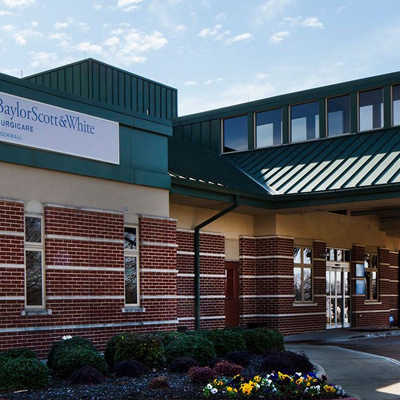
Baylor Scott & White Surgicare - Rockwall
825 W Yellowjacket Ln , Rockwall, TX, 75087
- Monday: 6:00 am - 5:00 pm
- Tuesday: 6:00 am - 5:00 pm
- Wednesday: 6:00 am - 5:00 pm
- Thursday: 6:00 am - 5:00 pm
- Friday: 6:00 am - 5:00 pm

Baylor Scott & White Medical Center - Lake Pointe
6800 Scenic Dr , Rowlett, TX, 75088

Baylor Scott & White Spine & Scoliosis Center - Frisco at PGA Parkway
16050 Everwell Ln Professional Pavilion I, Ste 310, Frisco, TX, 75033
- Monday: 8:00 am - 4:30 pm
- Tuesday: 8:00 am - 4:30 pm
- Wednesday: 8:00 am - 4:30 pm
- Thursday: 8:00 am - 4:30 pm
- Friday: 8:00 am - 4:30 pm

Baylor Scott & White Medical Center - Frisco at PGA Parkway
7600 Better Way , Frisco, TX, 75033
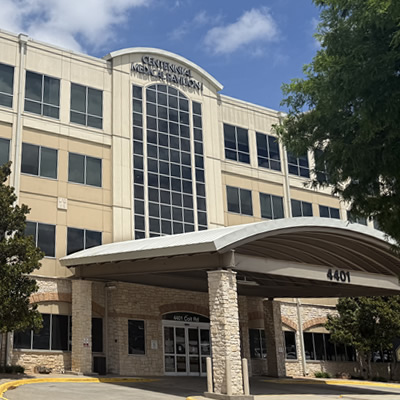
Baylor Scott & White Orthopedic Associates of Dallas - Centennial
4401 Coit Rd Ste 203, Frisco, TX, 75035
- Monday: 8:00 am - 5:00 pm
- Tuesday: 8:00 am - 5:00 pm
- Wednesday: 8:00 am - 5:00 pm
- Thursday: 8:00 am - 5:00 pm
- Friday: 8:00 am - 4:00 pm
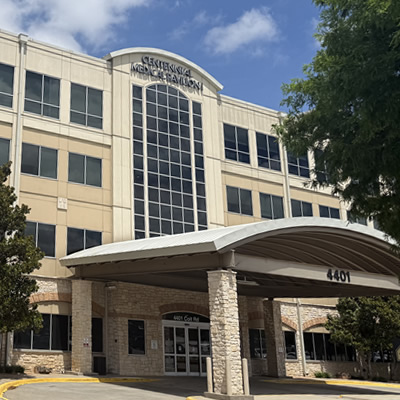
Baylor Scott & White Spine & Scoliosis Center - Frisco
4401 Coit Rd Ste 203, Frisco, TX, 75035
- Monday: 8:00 am - 4:30 pm
- Tuesday: 8:00 am - 4:30 pm
- Wednesday: 8:00 am - 4:30 pm
- Thursday: 8:00 am - 4:30 pm
- Friday: 8:00 am - 4:30 pm

Baylor Scott & White Medical Center - Centennial
12505 Lebanon Rd , Frisco, TX, 75035

Baylor Scott & White Orthopedic Associates of Dallas - North Garland
7217 Telecom Pkwy Ste 325, Garland, TX, 75044

Baylor Scott & White Surgicare - North Garland
7150 N President George Bush Hwy Ste 101, Garland, TX, 75044
- Monday: 6:00 am - 5:00 pm
- Tuesday: 6:00 am - 5:00 pm
- Wednesday: 6:00 am - 5:00 pm
- Thursday: 6:00 am - 5:00 pm
- Friday: 6:00 am - 5:00 pm

Baylor Scott & White Orthopedic Associates of Dallas at The Star
3800 Gaylord Pkwy Ste 810, Frisco, TX, 75034
- Monday: 8:00 am - 5:00 pm
- Tuesday: 8:00 am - 5:00 pm
- Wednesday: 8:00 am - 5:00 pm
- Thursday: 8:00 am - 5:00 pm
- Friday: 8:00 am - 5:00 pm

Baylor Scott & White Sports Surgery Center at The Star
3800 Gaylord Pkwy Ste 410, Frisco, TX, 75034
- Monday: 6:00 am - 5:00 pm
- Tuesday: 6:00 am - 5:00 pm
- Wednesday: 6:00 am - 5:00 pm
- Thursday: 6:00 am - 5:00 pm
- Friday: 6:00 am - 5:00 pm

Baylor Scott & White Spine & Scoliosis Center at the Star II
3800 Gaylord Pkwy Ste 830, Frisco, TX, 75034

Baylor Scott & White Medical Center - Frisco
5601 Warren Pkwy , Frisco, TX, 75034

Baylor Scott & White Medical Center - Sunnyvale
231 S Collins Rd , Sunnyvale, TX, 75182

Baylor Scott & White Orthopedic Associates of Dallas - Sunnyvale
341 Wheatfield Dr Ste 290, Sunnyvale, TX, 75182
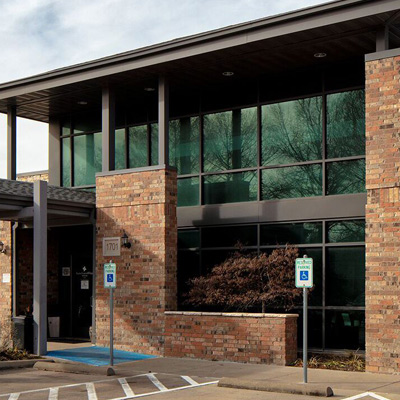
Baylor Scott & White Surgicare - Plano
1701 Ohio Dr , Plano, TX, 75093
- Monday: 6:00 am - 4:00 pm
- Tuesday: 6:00 am - 4:00 pm
- Wednesday: 6:00 am - 4:00 pm
- Thursday: 6:00 am - 4:00 pm
- Friday: 6:00 am - 4:00 pm

Baylor Scott & White - Plano Brain and Spine Center
4708 Alliance Blvd Pavilion I, Ste 810, Plano, TX, 75093

Baylor Scott & White Orthopedic Associates of Dallas - Plano
4716 Alliance Blvd Pavilion II, Ste 600, Plano, TX, 75093

Baylor Scott & White Medical Center - Plano
4700 Alliance Blvd , Plano, TX, 75093

Baylor Scott & White Surgicare - North Dallas
12230 Coit Rd Ste 200, Dallas, TX, 75251
- Monday: 6:00 am - 5:00 pm
- Tuesday: 6:00 am - 5:00 pm
- Wednesday: 6:00 am - 5:00 pm
- Thursday: 6:00 am - 5:00 pm
- Friday: 6:00 am - 5:00 pm
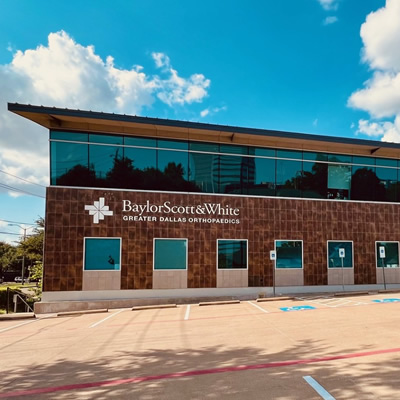
Baylor Scott & White Greater Dallas Orthopaedics
12230 Coit Rd Ste 100, Dallas, TX, 75251
- Monday: 8:30 am - 5:00 pm
- Tuesday: 8:30 am - 5:00 pm
- Wednesday: 8:30 am - 5:00 pm
- Thursday: 8:30 am - 5:00 pm
- Friday: 8:30 am - 5:00 pm
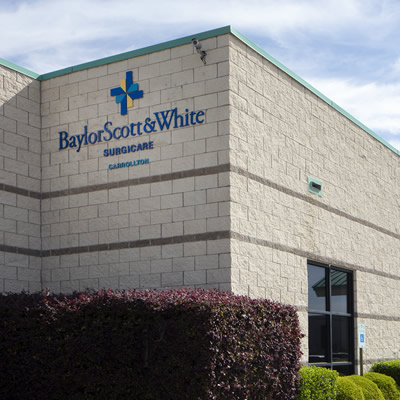
Baylor Scott & White Surgicare - Carrollton
4780 N Josey Ln , Carrollton, TX, 75010
- Monday: 6:00 am - 5:00 pm
- Tuesday: 6:00 am - 5:00 pm
- Wednesday: 6:00 am - 5:00 pm
- Thursday: 6:00 am - 5:00 pm
- Friday: 6:00 am - 5:00 pm

Baylor Scott & White Orthopedic Associates of Dallas - Park Cities
9101 N Central Expy Ste 370, Dallas, TX, 75231

North Central Surgical Center Hospital
9301 N Central Expy Ste 100, Dallas, TX, 75231
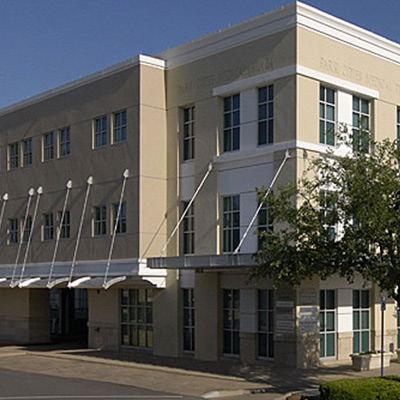
Park Cities Surgery Center
6901 Snider Plz Ste 300, Dallas, TX, 75205
- Monday: 6:00 am - 5:00 pm
- Tuesday: 6:00 am - 5:00 pm
- Wednesday: 6:00 am - 5:00 pm
- Thursday: 6:00 am - 5:00 pm
- Friday: 6:00 am - 5:00 pm

Baylor Scott & White Surgicare - Dallas
4020 Junius St , Dallas, TX, 75246
- Monday: 6:00 am - 5:00 pm
- Tuesday: 6:00 am - 5:00 pm
- Wednesday: 6:00 am - 5:00 pm
- Thursday: 6:00 am - 5:00 pm
- Friday: 6:00 am - 5:00 pm

Baylor Scott & White Spine & Scoliosis Center - Baylor University Medical Center
3900 Junius St Ste 705, Dallas, TX, 75246
- Monday: 8:00 am - 4:30 pm
- Tuesday: 8:00 am - 4:30 pm
- Wednesday: 8:00 am - 4:30 pm
- Thursday: 8:00 am - 4:30 pm
- Friday: 8:00 am - 4:30 pm

Baylor Scott & White The Shoulder Center at Baylor University Medical Center at Dallas
3900 Junius St Ste 740, Dallas, TX, 75246
- Monday: 8:30 am - 4:30 pm
- Tuesday: 8:30 am - 4:30 pm
- Wednesday: 8:30 am - 4:30 pm
- Thursday: 8:30 am - 4:30 pm
- Friday: 8:30 am - 12:30 pm

Baylor Scott & White Orthopedic Associates of Dallas
3900 Junius St Ste 500, Dallas, TX, 75246
- Monday: 8:00 am - 5:00 pm
- Tuesday: 8:00 am - 5:00 pm
- Wednesday: 8:00 am - 5:00 pm
- Thursday: 8:00 am - 5:00 pm
- Friday: 8:00 am - 5:00 pm

Baylor University Medical Center, part of Baylor Scott & White Health
3500 Gaston Ave , Dallas, TX, 75246

Baylor Scott & White Orthopaedic Trauma Associates - Dallas
3409 Worth St Ste 300, Dallas, TX, 75246
- Monday: 8:00 am - 4:30 pm
- Tuesday: 8:00 am - 4:30 pm
- Wednesday: 8:00 am - 4:30 pm
- Thursday: 8:00 am - 4:30 pm
- Friday: 8:00 am - 2:00 pm

Baylor Scott & White Medical Center - Uptown
2727 E Lemmon Ave , Dallas, TX, 75204

Baylor Scott & White Orthopedic Associates of Dallas - Flower Mound
1110 Parker Sq , Flower Mound, TX, 75028
- Monday: 8:00 am - 5:00 pm
- Tuesday: 8:00 am - 5:00 pm
- Wednesday: 8:00 am - 5:00 pm
- Thursday: 8:00 am - 5:00 pm
- Friday: 8:00 am - 5:00 pm

Baylor Scott & White Surgical Hospital - Las Colinas
400 W Lyndon B Johnson Fwy Ste 101, Irving, TX, 75063

Baylor Scott & White Orthopedic Associates of Dallas - Irving
2001 N MacArthur Blvd Ste 630, Irving, TX, 75061
- Monday: 8:00 am - 5:00 pm
- Tuesday: 8:00 am - 5:00 pm
- Wednesday: 8:00 am - 5:00 pm
- Thursday: 8:00 am - 5:00 pm
- Friday: 8:00 am - 5:00 pm

Baylor Scott & White Greater Dallas Orthopaedics - Irving
2001 N MacArthur Blvd Ste 630, Irving, TX, 75061

Baylor Scott & White Medical Center - Irving
1901 N MacArthur Blvd , Irving, TX, 75061
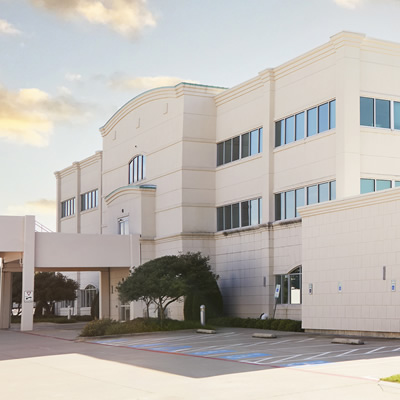
Baylor Scott & White Orthopedic Associates of Dallas - Complex Shoulder Institute
1631 Lancaster Dr Ste 205, Grapevine, TX, 76051
- Monday: 8:00 am - 5:00 pm
- Tuesday: 8:00 am - 5:00 pm
- Wednesday: 8:00 am - 5:00 pm
- Thursday: 8:00 am - 5:00 pm
- Friday: 8:00 am - 5:00 pm

Baylor Scott & White Medical Center - Grapevine
1650 W College St , Grapevine, TX, 76051
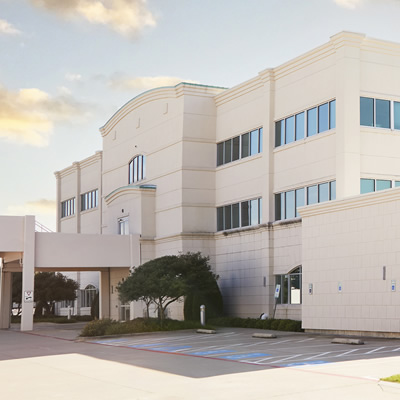
Baylor Scott & White Orthopedic Associates of Dallas - Grapevine
1631 Lancaster Dr Ste 230, Grapevine, TX, 76051
- Monday: 8:00 am - 5:00 pm
- Tuesday: 8:00 am - 5:00 pm
- Wednesday: 8:00 am - 5:00 pm
- Thursday: 8:00 am - 5:00 pm
- Friday: 8:00 am - 5:00 pm
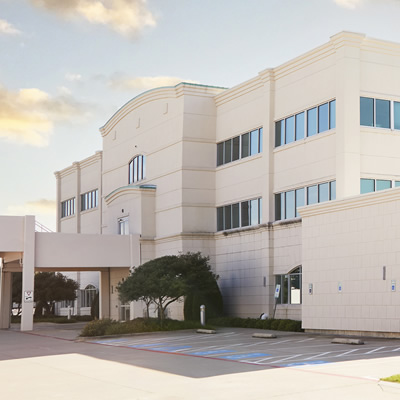
Baylor Scott & White Orthopaedic Trauma Associates - Grapevine
1631 Lancaster Dr Ste 230, Grapevine, TX, 76051
- Monday: 8:00 am - 4:30 pm
- Tuesday: 8:00 am - 4:30 pm
- Wednesday: 8:00 am - 4:30 pm
- Thursday: 8:00 am - 4:30 pm
- Friday: 8:00 am - 2:00 pm
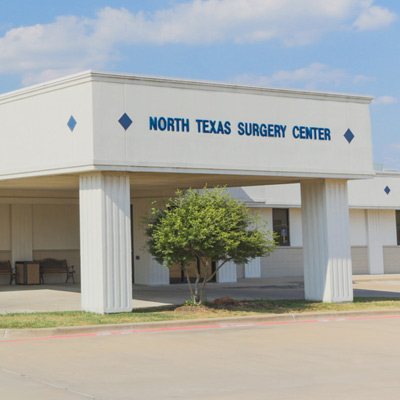
North Texas Surgery Center
7992 W Virginia Dr , Dallas, TX, 75237
- Monday: 6:00 am - 5:00 pm
- Tuesday: 6:00 am - 5:00 pm
- Wednesday: 6:00 am - 5:00 pm
- Thursday: 6:00 am - 5:00 pm
- Friday: 6:00 am - 5:00 pm
Frequently asked questions
-
Can oral antibiotics treat a bone infection?
Yes, oral antibiotics can treat a bone infection. You may need to start by receiving antibiotics intravenously (through a vein) before your doctor clears you to take oral antibiotics.
-
How do you get a bone infection?
Osteomyelitis is a bone infection that happens when bacteria or fungi enter the bone, often through open wounds, surgery or infections spreading from nearby areas or the bloodstream. People with diabetes, weakened immune systems or extended hospital stays are at higher risk. The most common cause is Staphylococcus aureus.
-
Is osteomyelitis contagious?
No, osteomyelitis is not contagious. The bacteria and fungi that cause it, however, may spread between people in some cases.
-
How long does bone infection take to heal?
Depending on its severity, a bone infection (osteomyelitis) usually takes 4 to 12 weeks to heal with antibiotics. Treatment often starts with IV antibiotics and then switches to oral pills. In serious cases, surgery may be needed to remove infected bone. Early treatment improves healing and recovery time.
-
How serious is bone infection?
Osteomyelitis is a serious bone infection that can range from mild to severe. Without treatment, it can cause serious problems like sepsis or amputation. Early treatment with antibiotics and sometimes surgery is important. Good hygiene, caring for wounds and getting vaccines can help prevent the infection.
-
Can osteomyelitis come back?
Yes, osteomyelitis can come back, especially if it wasn't fully treated or if your immune system is weak. Risk factors include incomplete treatment, diabetes and past surgeries. See your doctor if symptoms like pain, swelling or fever return. Treatment may include antibiotics, surgery and sometimes hyperbaric oxygen therapy.
-
Can a bone infection spread?
Yes, bone infections can spread from nearby areas, through the bloodstream from other parts of the body, or during surgery. To reduce the risk, keep cuts or bites clean, treat injuries right away and watch for signs of infection in any wounds.
